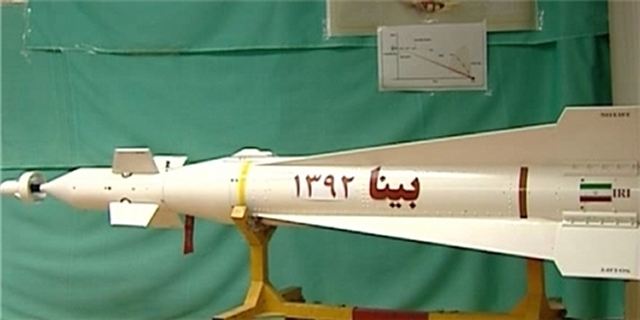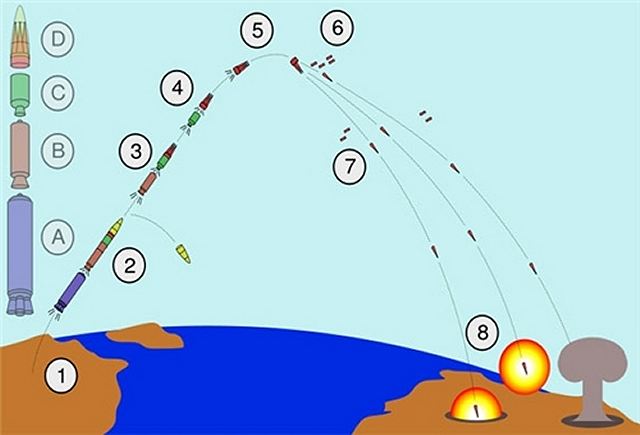| a | |||
Defence & Security News - Iran |
|||
| Monday, February 10, 2014 08:03 PM | |||
| Iran has successfully tested Bina new local-made surface-to-surface laser guided missile. | |||
The Iranian Defense Ministry announced
on Monday, February 10, 2014, that it has successfully tested two new
missiles, including a laser-guided surface-to-surface and air-to-surface
missile and a new generation of long-range ballistic missiles carrying
Multiple Reentry Vehicle payloads. |
|||
| |
|||
 Iranian-made Bina surface-to-surface laser-guided missile |
|||
The ministry said it has successfully tested a new generation of long-range ballistic missiles with Multiple Reentry Vehicle payloads and a laser-guided air-to-surface and surface-to-surface missile named Bina. The missiles were test-fired in a ceremony on the eve of the 35th anniversary of the victory of Iran's 1979 Islamic Revolution to mark the occassion. Speaking during
the ceremony, Iranian Defense Minister Brigadier General Hossein Dehqan
noted that Bina missile is laser-guided and can be fired from aircraft
and different ground launch platforms. He enumerated the high-speed in destroying the targets, easy maintenance and high-speed of operation as specifications of Bina missile. The minister further noted Iran's newly developed ballistic missile with MRV payload, and said it has been designed and produced for destroying enemy’s military hardware and all types of enemy military equipment. “Evading enemy’s anti-missile defense systems, the capability of destroying massive targets and destroying multiple targets are specifications of this missile,” the Iranian defense minister said, but did not name the new weapon. The hi-tech weapon is owned only by the major world powers. President Rouhani has congratulated the Supreme Leader, the nation and the military forces on the giant achievement. |
|||
 Trajectory and Targeting of Ballistic Missiles with MRV Payloads |
|||
A
Multiple Reentry vehicle payload for a ballistic missile deploys multiple
warheads in a pattern against a single target. (As opposed to Multiple
independently targetable reentry vehicle, which deploys multiple warheads
against multiple targets.) The advantage of an MRV over a single warhead
is that the damage produced in the center of the pattern is far greater
than the damage possible from any single warhead in the MRV cluster, this
makes for an efficient area attack weapon. Also, the sheer number of Warheads
make interception by Anti-ballistic missiles unlikely. Improved warhead designs allow smaller warheads for a given yield, while better electronics and guidance systems allowed greater accuracy. As a result MIRV technology has proven more attractive than MRV for advanced nations. Because of the larger amount of nuclear material consumed by MRVs and MIRVs, single warhead missiles are more attractive for nations with less advanced technology. The United States deployed an MRV payload on the Polaris A-3. The Soviet Union deployed MRVs on the SS-9 Mod 4 ICBM. Refer to atmospheric reentry for more details. |
|||
Iran has successfully tested Bina new local-made surface-to-surface laser guided missile 1002147
- Posted On














